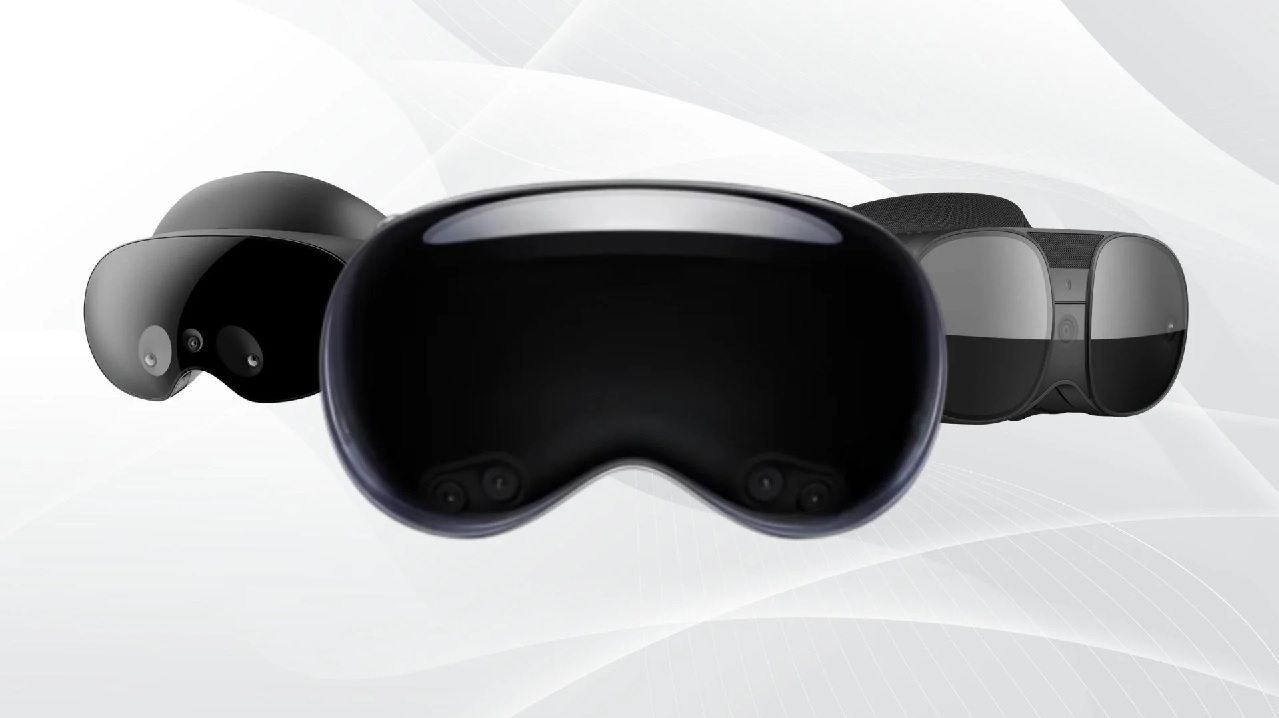Apple, the company synonymous with sleek design and groundbreaking technology, has finally entered the mixed reality arena with the Apple Vision Pro. Unveiled in June 2023, this headset isn’t just another VR or AR toy. It’s a meticulously crafted glimpse into a future where the lines between the physical and digital worlds blur beautifully. And with pre-orders starting in January 2024 and deliveries set for February, the hype is reaching fever pitch.
The Apple Vision Pro glasses have a sleek, minimalist design that resembles ordinary eyeglasses. But hidden inside the frames are a host of advanced technologies including sensors, cameras and Apple’s latest processing chips. The Vision Pro allow users to overlay computer-generated content and information onto their real-world surroundings in real-time.
Some key features and capabilities of Apple Vision Pro AR glasses:
Optical Waveguide Display – The lenses utilize a specialized optical waveguide technology to project digital images and information directly into the user’s field of vision. This creates an immersive augmented view while allowing the real world to still be seen.
LiDAR Depth Sensor – A small LiDAR sensor above the bridge of the glasses collects precise depth information about the surrounding environment. This allows for detailed mapping and occlusion of virtual objects in real space.
Hand Tracking – Built-in cameras track the position and movement of the user’s hands, allowing for natural gesture and motion controls. Users can virtually interact with and manipulate virtual objects just by moving their hands.
Environmental Understanding – Advanced computer vision algorithms let the Vision Pro glasses gain a detailed understanding of surfaces, objects and lighting conditions in the user’s surroundings. This enables realistic placement of virtual objects and occlusion.
Powerful Processing – Apple’s latest mobile processor allows the Vision Pro glasses to perform intensive AR computations while maintaining low latency and a high frame rate for smooth interactions.
Extended Reality – The Vision Pro glasses can seamlessly switch between AR, VR and MR modes. AR overlays digital content on reality, while VR is fully immersive in a virtual environment. MR dynamically mixes the two.
Natural Language Interface – Using the built-in microphones, users can issue voice commands and queries just like they would with Siri or Alexa. The glasses provide hands-free control and information access.
Integrated Apps – The Vision Pro glasses come pre-installed with a suite of Apple apps designed for AR, including messaging, maps, games and more. More apps are available on the App Store. Developers can build AR apps using Apple’s software tools.
Seamless Ecosystem Integration – The Vision Pro glasses integrate tightly across Apple’s ecosystem of devices and services including iPhone, iPad, Mac, Apple Watch and iCloud. Features like Handoff allow experiences to transition between devices.
Apple is betting heavily that augmented reality is poised to explode in popularity, with AR apps and experiences set to rival what’s available on smartphones today. The company envisions a world where digital information is seamlessly overlaid onto our surroundings at all times through AR glasses.

Some potential use cases for the Vision Pro glasses include:
Navigation – Overlaid maps and directions are displayed right in the wearer’s line of sight as they walk or drive around. Important landmarks and points of interest are highlighted.
Shopping – Product reviews, prices and inventory information are instantly viewable when looking at items on shelves. Online stores can be virtually browsed as if products were really there.
Gaming – AR games can transform real-world environments into digital playscapes. Multiplayer games blend virtual and real opponents.
Education – Students can view interactive 3D models of historical objects and locations, bringing lessons to life. Labels and informational pop-ups appear on real objects and places.
Translation – Foreign language text on signs or menus is instantly translated into the user’s native tongue in their field of view. Conversations are also translated live.
Social Media – Notifications and messages from friends can appear as virtual billboards pinned to real-world locations. Holograms make video calls more immersive.
Work – Architects, engineers, designers and artists can create and interact with virtual prototypes and models right alongside the real environment.
Health and Fitness – Vision Pro glasses could display health stats like heart rate, provide workout instructions, and overlay helpful running routes and cycling trails.
Challenges:
While Apple’s Vision Pro AR glasses represent a major leap into the future of computing, some challenges and criticisms have emerged:
- Limited battery life – Current battery technology restricts continuous, intensive use. Frequent recharging may disrupt user experiences.
- Bulky design – Fitting all the hardware into glasses still results in a bulkier frame compared to ordinary glasses. Further miniaturization is needed.
- High price – The $3,499 price tag makes Vision Pro glasses expensive for the average consumer. Widespread adoption will depend on lower price points in the future.
- Privacy concerns – Always-on cameras and sensors on one’s glasses raise red flags about highly intrusive data collection and surveillance.
- Information overload – Some critics argue that having a constant digital overlay on our regular surroundings could make people feel overwhelmed and distracted.
- Limited apps – Until more developers build apps, the glasses’ utility could remain constrained. A robust AR app ecosystem is still in early stages.
- Reduced social interactions – Wearing AR glasses in social settings might isolate people and reduce human conversations and connection. The lure of virtual content could disrupt real interactions.
- Safety issues – Wearing visually obstructing glasses and interacting with virtual objects could increase the risk of accidents and injuries. Proper safety precautions will need to be put in place.
Apple has a number of major challenges to clear before introducing augmented reality glasses into the mainstream. If Apple can spur developer support and continue innovating with its hardware, the Vision Pro glasses could herald the next great shift in personal computing and open up game-changing new applications for AR technology.
If you want to explore more tech info visit USA EXPRESS 24

